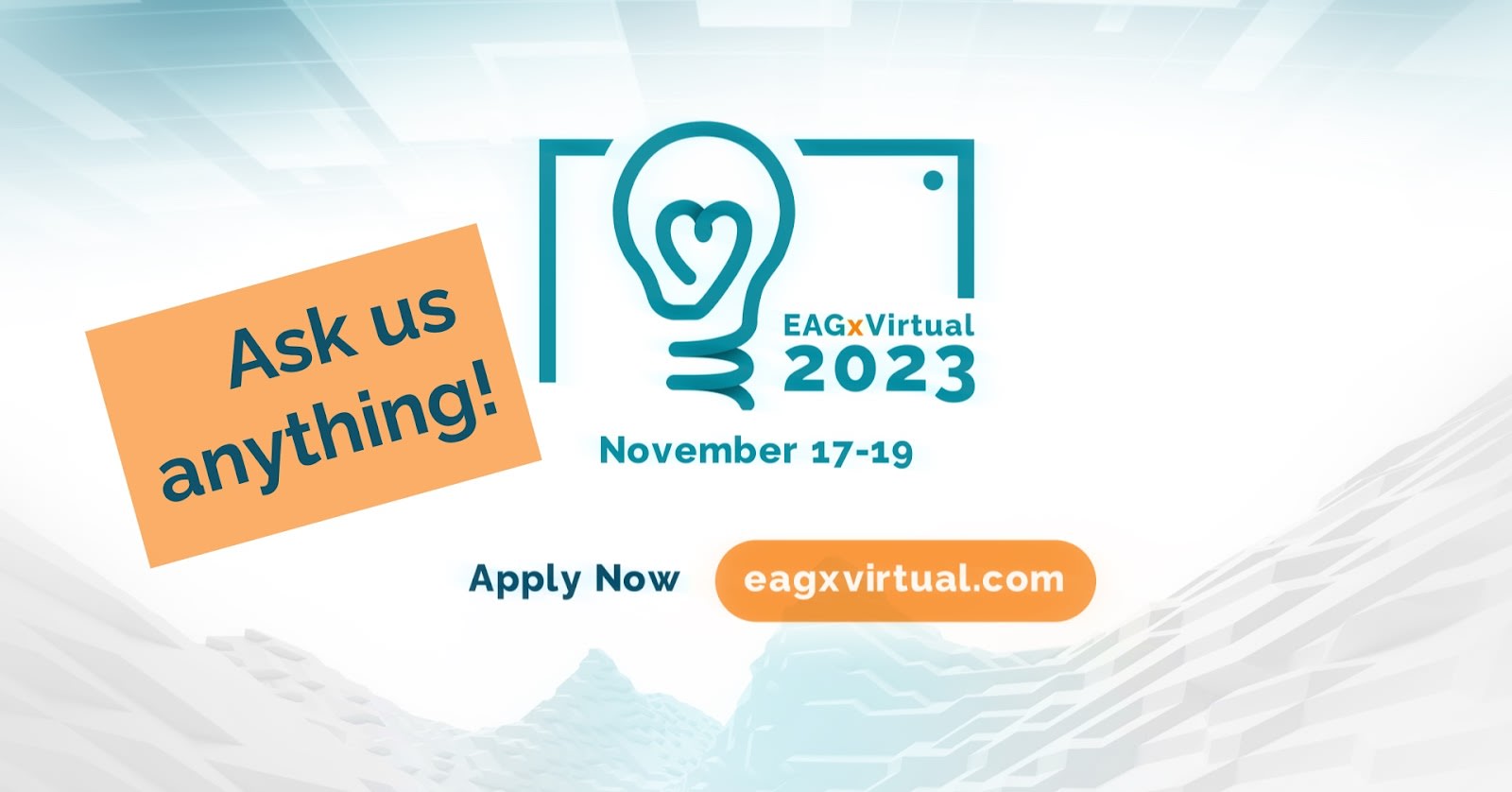EAGxVirtual 2023, a free online effective altruism conference (November 17–19), is just two weeks away!
The event will bring together EAs from around the world, and will facilitate discussions about how we can work on pressing problems, connections between attendees and diverse fields, and more.
Apply here by 16 November.
We've recently published some more details about the event and we want to invite you to ask us about what to expect from the event. Please post your questions as comments by the end of the day on Sunday (5 November) and we’ll aim to respond by the end of the day on Monday (6 November).
Some question prompts:
- Unsure about applying? We encourage everyone with a genuine interest in EA to apply, and we're accepting a vast majority of people. Let us know what you're uncertain about with the application process.
- Undecided whether to go? Tell us why and we can help you. We'll probably be biased but we’ll try our best to present considerations on both sides—it won’t be a good use of time for everyone!
- Unsure how to prepare? You can find some tips on the EA Global topic page but we're happy to help with your specific case if you need more tips!
- Uncertain how to set up a group activity (a screening, a meet-up etc.) for the event? Share your thoughts below and we can help you plan!
We look forward to hearing from you!
-
Sasha, Dion (EAGxVirtual / EA Anywhere) and Ollie (CEA)




As someone who is trying to organize a local EAGx Virtual "co-attending" session, I would be curious to hear any tips on how to emulate the in-person conference experience as much as possible.
Currently, we have two rooms booked at my university, with the idea of one being used for livestreaming events/group activities and the other for 1:1's / individual reflection etc. Having a shared time for lunch and some preplanned group activities seems important, as well as helping keep track of what events are happening, and allowing for in-person 1:1's.
With that in mind, what things would you prioritize in making the experience as close to an in-person conference?
Hi Michael,
Here are some quick thoughts:
- Make sure to block some time for attendees to reflect on their conference goals & planning. We are hosting a workshop on Friday to encourage this type of reflection ("First-timers at EAGx", at 3 pm UTC). You can also use our planning worksheet.
- Group activities like watching talks together, in-person 1-1s, and shared lunch seem like good ideas!
- It is better if space for 1-1s isn't packed very tight. It can be distracting when lots of people speaking around. And if two people are attending the same meetup or office
... (read more)